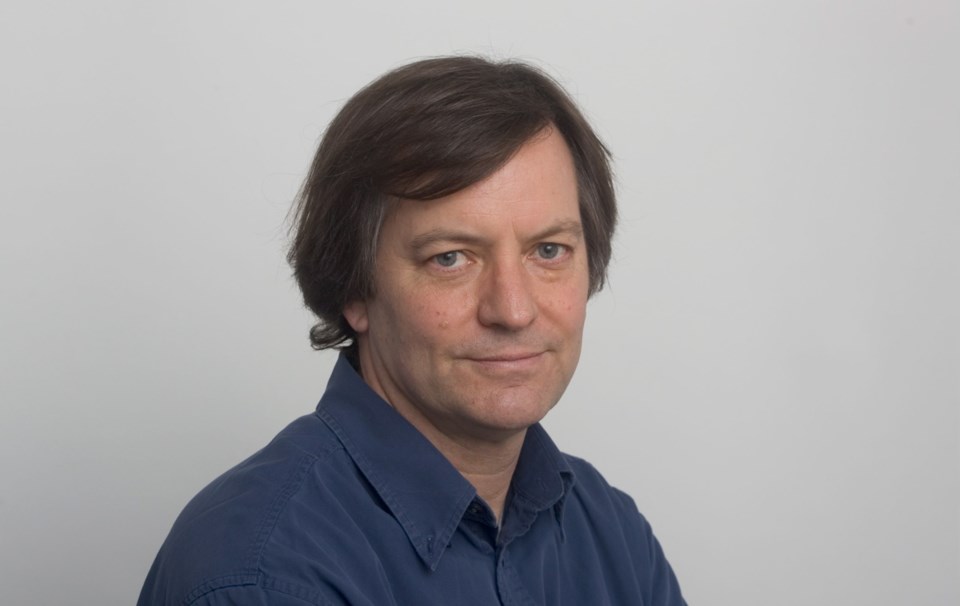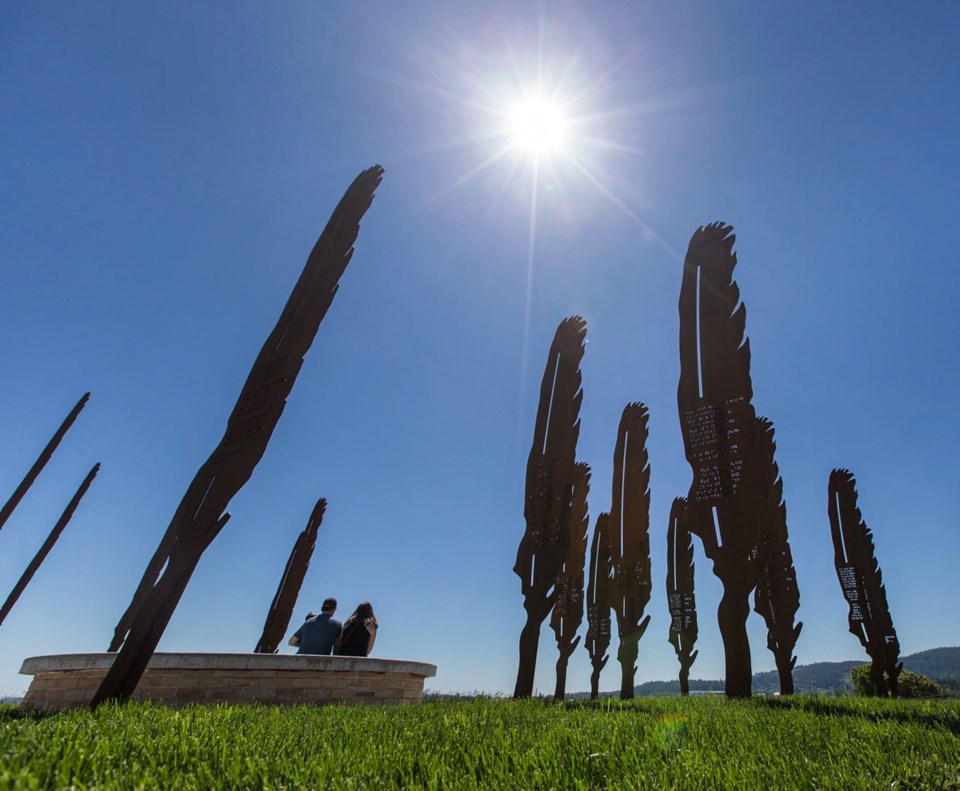 Lost Airmen of the Empire: what a beautiful title for a memorial to the 10,000 pilots who trained at Pat Bay during the Second World War.
Lost Airmen of the Empire: what a beautiful title for a memorial to the 10,000 pilots who trained at Pat Bay during the Second World War.
The memorial, which will be officially dedicated on Thursday, is on Mills Road on the north side of Victoria International Airport. The designer of the memorial is sculptor Illarion Gallant, and I recently visited him at his home and workshop in the Blenkinsop Valley.
Gallant’s sculptural practice is writ large. On the way into his property, I passed four pickup trucks and a dump truck, just part of the fleet necessary for the landscape-design business he and his wife, Twyla Rusknak, operate. Together, they and their crews are constantly at work on properties all over the Pacific Northwest. While Rusknak specializes in the growing things and the garden design, Gallant is in charge of landforms, hard surfaces and imaginative incursions into the natural landscape.
Up by their rambling home, I passed his fabricating shop and design studio. Lying outside the shop are the components for a sculpture soon to become part of Oak Bay’s outdoor-sculpture installation. This one is almost 10 metres tall and fabricated from stainless steel pipe, bent into subtle and sinuous forms. Formed to Gallant’s specifications by pipe-benders in Langley, this material has become an important element of his public art palette.
Affixed to the wall of the shop are two cutouts of four-metre tall Cooper’s hawk feathers. Cut into each feather are the names of fallen airmen. These designs were transferred to half-inch CorTen steel and cut out with a high pressure water jet. Lying around the yard were cutout maple leaves, and the giant sheets of steel from which the leaves had been cut.
In addition to numerous short-term installations, every year three or four major public-art pieces emerge from this workshop.
A garland of stainless-steel maple leaves 15 metres tall has recently been affixed to a residential/commercial complex in North Vancouver, and reeds like blades of grass five metres tall stand in a shallow reflecting pond in Richmond. A big piece for a building at Yates Street and Blanshard Street is ready to assemble. I next arrived at his studio, where Gallant brought me up to date on some of his recent commissions.
A memorial to three fallen RCMP officers was planned for Moncton, N.B. For this, Gallant met and photographed an officer in uniform. These photos could be used for 3-D imaging, which would then be translated into a negative form in sand, a mould for bronze casting — very high-tech, and much less expensive than the modelling, casting and mould-making that he was trained in. He spoke of presenting his ideas to an audience of 150, with the widows of the officers in the front row.
Closer to home was a proposal for an obelisk to commemorate the soldiers of Central Saanich who fell in the First World War. The obelisk was designed with a niche set with field stones gathered from neighbouring farms, to honour the local and rural roots of the enlisted men.
Spiralling up to the top of the monument, he planned a garland of cut metal maple leaves. Like his other proposed memorials, this monument would be set in a carefully configured landscape, a place for reflection and also a community amenity in the form of a park.
So the artist was well-prepared when he was invited to submit a design for the Lost Airmen of the Empire project. Gallant’s mother, a White Russian, had been interned by the Nazis, and his British father had served in India.
Gallant grew up in the suburbs of Toronto, which during the 1950s were almost entirely populated by immigrants — Czechs, Poles, Hungarians, Italians and so on. He was enthralled by the tales of wartime told by his parents, and his childhood artistry was predominantly informed by images of warfare.
Later, as an art student, he couldn’t avoid the politics of the Vietnam war. Though he is not a militaristic sort of person, these memorials have brought the wars home to him in ways he didn’t anticipate.
“When I got the list of people who were killed,” he told me, “it just broke my heart.” Pilots in training at Pat Bay fell in many locations in Saanich and the lower Island.
“A whole aircraft goes down and wipes out six 19-year-olds. My God,” he reflected, “that was my father’s age during the war, and my son’s age now.” These were optimistic youths, he noted, coming here … and dying.
“They were learning how to be predators,” he went on. “So that’s why I used the Cooper’s hawk feathers. The hawks are agile, ferocious fighters — fearless.” And to represent the unexpectedness of death that came to the fallen, the feathers are placed at random in a formal circular garden. Lining the allee which leads to them he has planted red-leafed maple trees.
Benches are provided for those who have always come to this rise of land, for it is as a place to watch planes come and go. A “memory capsule” includes letters, insignia and components of uniforms, provided in part by 433 Squadron, a Royal Canadian Air Force unit that operates the Sea King helicopters at Pat Bay. Gallant’s association with those men and women was another component of this extraordinary sculptural practice.
The official dedication of Lost Airmen of the Empire will take place on Thursday at 10 a.m. at the airport, and the public is invited to attend.



